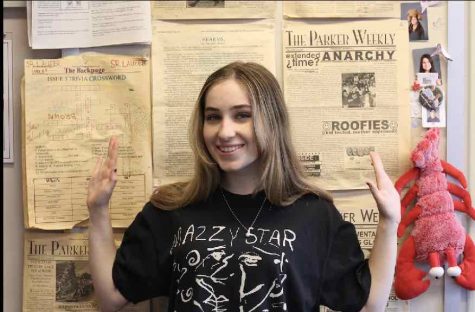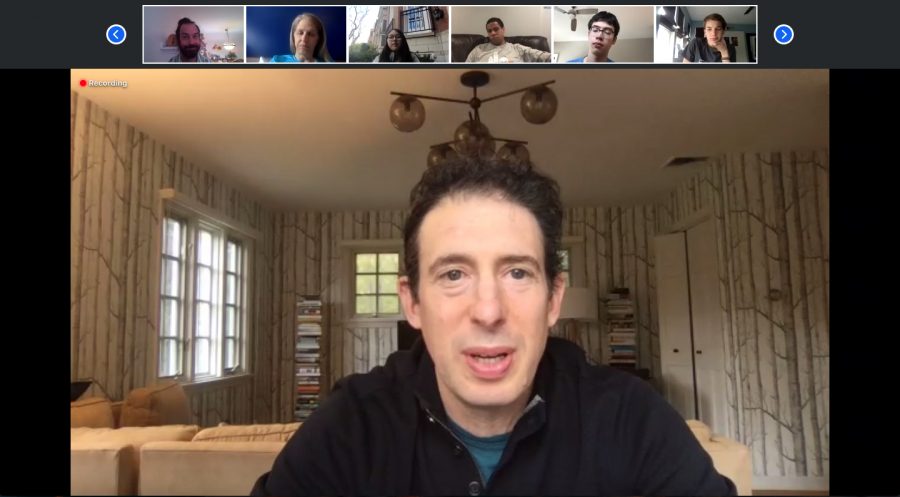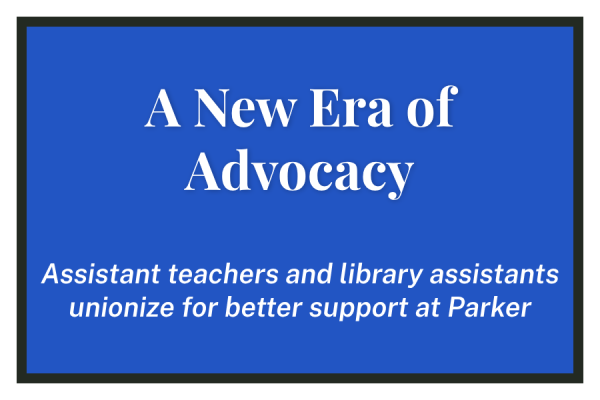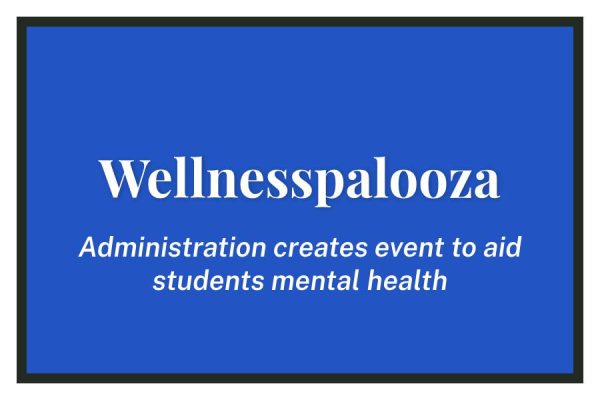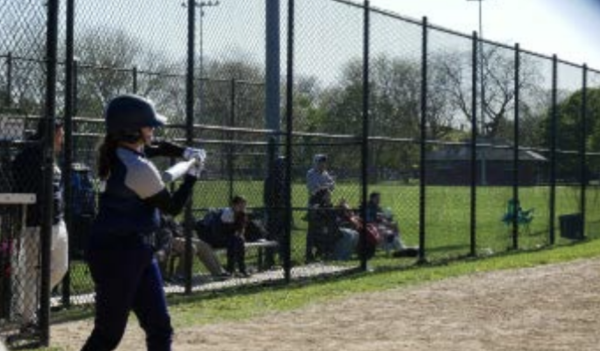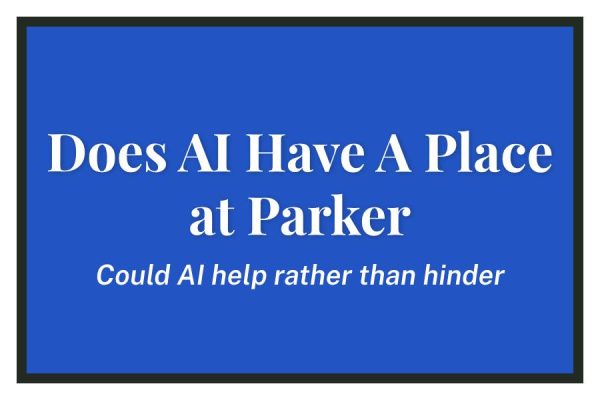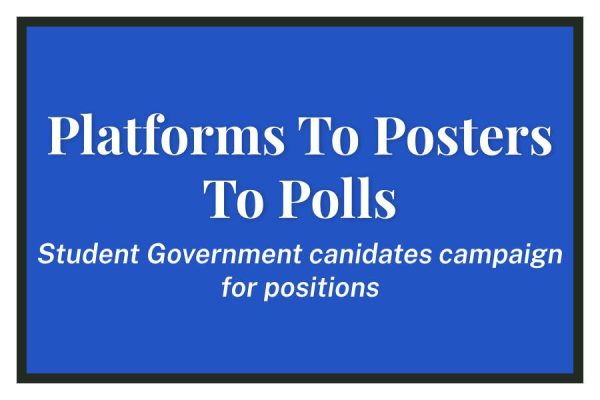Heat Wave and COVID Curve
Sociology Professor Eric Klinenberg ’89 Speaks on Social Solidarity
Photo credit: Anna Fuder
NYU professor Eric Klinenberg ’89 discussed the connections between his latest book and the current COVID-19 pandemic
As Principal Dan Frank popped in from the waiting room, Parker alumnus and sociologist Eric Klinenberg ‘89 made small talk to an audience still deciding whether or not to keep their camera on. After moving his family dinners and college classes to Zoom, Klinenberg brought Morning Ex to video conference.
Klinenberg, Director of the Institute for Public Knowledge at New York University, was one “ZooMX” speaker in a series organized by Upper School History Teacher and Department Co-Chair Andrew Bigelow. On Monday, May 11, Klinenberg held a 30-minute lecture from his home in New York City, followed by a 30-minute question and answer period. Klinenberg is a professor of sociology, which is the study of how social life works, a field that is relevant as governors and mayors advise their states to socially distance.
Frank suggested to Bigelow that Klinenberg, an alumni who’s still connected to Chicago, would be a fitting speaker for the series. His most recent book, “Palaces for the People: How Social Infrastructure Can Help Fight Inequality, Polarization, and the Decline of Civic Life,” has themes that Bigelow and Frank both found relevant to life in Chicago during the pandemic. “What’s going on right now is an economic disaster,” Bigelow said, “but it is a social one as well.”
According to Bigelow, Klinenberg agreed in minutes. Bigelow then sent out an invite to grades nine through twelve, and received around 123 RSVPs.
Klinenberg started by describing the world of his childhood that existed “between Belden and Webster.” “I can’t think of a more exciting and intellectually intense room that I’ve ever sat in than the rooms I sat in at Parker,” Klinenberg said.
Though he’s based in New York now, Klinenberg still considers Chicago as a home for him and his family, a home he has great pride in. Yet Klinenberg believes that there’s something “fundamentally wrong” with the city. “It is a city that is organized around profound racial segregation and economic inequality.”
Klinenberg drew parallels between the COVID-19 pandemic and the 1995 heat wave, two events that highlighted what he says is fundamentally wrong with the city. In his 2002 book, “Heat Wave: A Social Autopsy of Disaster in Chicago,” Klinenberg follows the events of five days when the heat index reached highs of 126 degrees. When Chicagoans began turning up their air conditioners, it was followed by mass power outages. Even as the heat died down, the impact remained as emergency rooms and morgues became overwhelmed with patients suffering from the extreme heat.
“Some people were able to keep their power, some people were able to get away to second homes and escape the worst of it,” Klinenberg said. “Other people were young and healthy and had strong internal defenses. But there are a lot of people in Chicago who are pretty vulnerable all the time.”
According to Klinenberg, those running the city were able to track the dangerous heat heading towards the city, but instead of creating plans to keep people safe, they “went to their second homes.”
The mayor at the time challenged the medical examiner and claimed that the numbers he was generating on the number of heat-related deaths were politically motivated. Klinenberg described people in power who were more interested in self-preservation than the deaths of those in oppressed communities in Chicago. “What it felt like to me was a kind of metaphor for the problem that Chicago has dealing with itself. The problem that Chicago has dealing with the reality of Chicago.”
Klinenberg noted that the same disparities emphasized by the heat wave are present COVID-19 impacts in Chicago. Data from the city shows that black and Latino communities are disproportionately affected by the pandemic, in both the number of cases and the death rate.
“Are you tracking which neighborhoods in which communities in Chicago are being hit the hardest by the coronavirus pandemic?” Klinenberg said. “I’ll tell you the map looks very similar. The map looks similar when you go to Detroit and when you go to Milwaukee. And when you go to St. Louis or when you go to Kansas City. In some ways it’s predictable, even when the threat is different.”
Senior Celia Rattner is planning to major in Sociology and appreciated the connection Klinenberg made between 1995 and 2020. “It was an event I’ve never heard of, honestly, but it’s clear that the issues that existed then, which resulted in the deaths of many lower income people of color, are social disparities that are still in place today,” Rattner said.
Modern life, as Klinenberg sees it, is based in an interdependent web of relationships between institutions and people, where all of our fates are connected. Instead of “socially distancing” from each other, Klinenberg proposes that the focus shifts to “physically distancing” to stop the spread of the virus. “What we also need is the opposite of social distancing – we need social solidarity. If there’s ever been a time when we need social solidarity, it’s now,” Klinenberg said.
Social solidarity, to Klinenberg, is dependent on the systems of education and employment that influence how people connect to each other. Without protection for workers who live paycheck to paycheck, it’s difficult to stay home if they’re infected. “We make decisions about how to treat each other, you know, not just a neighbor to neighbor friend to friend but citizen to citizen through policy, we make decisions about how to treat each other that wind up, promoting our collective health.”
Upper School History Teacher Susan Elliot has taught Klinenberg’s books in her history class and attended his talk. Elliott said she found the distinction between social and physical distancing uplifting. “I have seen in my own experience, since this started that people are doing a lot to help each other, so I don’t think that it’s completely like optimistic and idealistic that it has some practicality to it,” Elliott said.
Sophomore Sofia Brown, whose father was in the same graduating class as Klinenberg, thought that the talk made her think about the pandemic in new ways. “Most people are probably not aware of how big of an impact disconnectedness is actually having on other people because like most of us, I’d say, have a comfortable home,” Brown said.
As a family friend of Klinenberg, Brown was also able to see him in a new light. “They were in the same class and they’re still best friends to this day so I’ve seen him a lot,” Brown said. “I had basically no idea what he actually did so it was very interesting for me to hear from him. Now I have this whole different perspective of who he is as a person.”
Brown is currently at her farm in Wisconsin. “I’ve seen a lot of people going to like Michigan or Wisconsin, those types of house,” Brown said. “That plays into like the privilege at Parker, that lots of people do have a place to escape.”
In Klinenberg’s field, it’s thought that second homes are a part of the social structure in contemporary cities. “If you’re affluent, if you have some privilege, you probably have a way to get out of the hot and crowded city,” Klinenberg said. “I bet there’s a bunch of people who are listening who can relate to that.”
The farm is located in what Brown describes as the middle of nowhere, where she’s noticed a different kind of response than she sees in the city. “When I do go into town, most people don’t wear masks. People are way less cautious here.”
In both rural and urban areas, Klinenberg believes the next step is to practice social solidarity as well as physical distancing within communities. “Let’s start to think about what comes after this because disasters, crises, can be learning experiences and they can be pivot points for societies,” Klinenberg said.
Klinenberg sees two potential futures for life after the pandemic––either someone takes advantage of the chaos to steer the nation towards an authoritarian rule, or the country gains a new appreciation for the ways our society is linked together.
Elliott has a more optimistic view of what the fall will look like. Even if school happens remotely, she says she will better understand the challenges her students will be facing. “It took me a long time to figure out, that kid is responsible for her little sister all day, that’s why she’s so not paying attention,” Elliott said. “That kid is staying up all night playing video games because he feels so adrift, so he’s really tired in the morning. Now I have a little bit more of a roadmap, I think we’ll be better able to help kids in the future because they’ll be better at articulating what they need.”
Either way, Klinenberg believes this is a learning opportunity we need to act. “We’ve organized our world so that some people have an easier time protecting themselves, and other people don’t,” Klinenberg said. “There’s something about a crisis, whether it’s a heat wave or a pandemic, that allows us to see these things especially clearly.”
